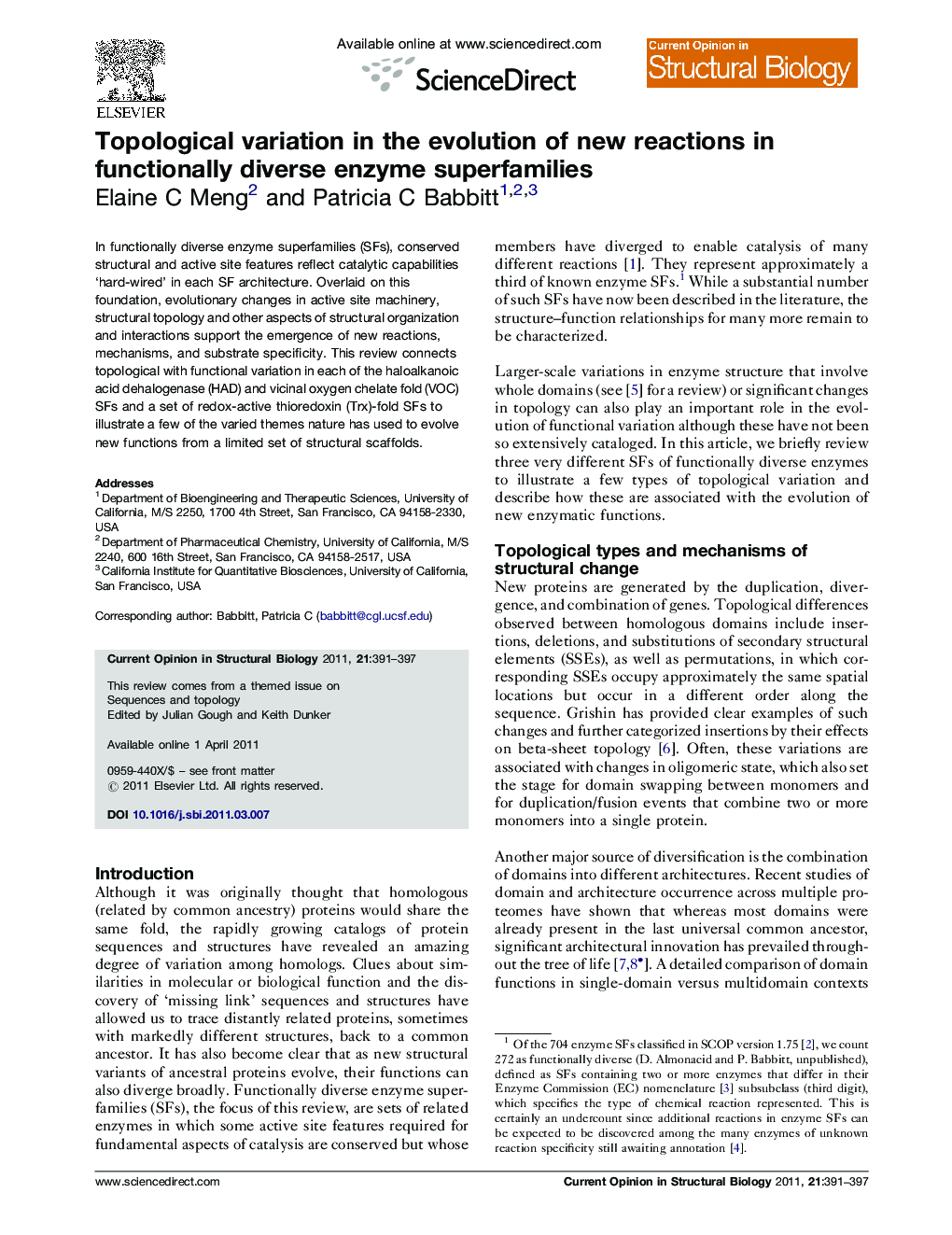| Article ID | Journal | Published Year | Pages | File Type |
|---|---|---|---|---|
| 1979157 | Current Opinion in Structural Biology | 2011 | 7 Pages |
In functionally diverse enzyme superfamilies (SFs), conserved structural and active site features reflect catalytic capabilities ‘hard-wired’ in each SF architecture. Overlaid on this foundation, evolutionary changes in active site machinery, structural topology and other aspects of structural organization and interactions support the emergence of new reactions, mechanisms, and substrate specificity. This review connects topological with functional variation in each of the haloalkanoic acid dehalogenase (HAD) and vicinal oxygen chelate fold (VOC) SFs and a set of redox-active thioredoxin (Trx)-fold SFs to illustrate a few of the varied themes nature has used to evolve new functions from a limited set of structural scaffolds.
► We examine how topological variations contribute to natural evolution of new enzymes. ► These variations often allow changes in specificity, conserving primary mechanism. ► Variations span permutations of a primordial subdomain to inserts in a core domain. ► Large-scale studies across a superfamily can be needed to reveal these variations.
